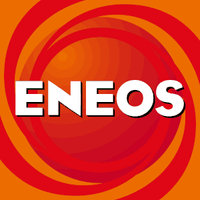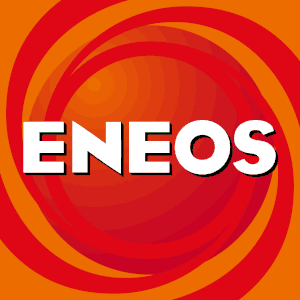
ENEOS Holdings Inc
TSE:5020


Utilize notes to systematically review your investment decisions. By reflecting on past outcomes, you can discern effective strategies and identify those that underperformed. This continuous feedback loop enables you to adapt and refine your approach, optimizing for future success.
Each note serves as a learning point, offering insights into your decision-making processes. Over time, you'll accumulate a personalized database of knowledge, enhancing your ability to make informed decisions quickly and effectively.
With a comprehensive record of your investment history at your fingertips, you can compare current opportunities against past experiences. This not only bolsters your confidence but also ensures that each decision is grounded in a well-documented rationale.
Do you really want to delete this note?
This action cannot be undone.

| 52 Week Range |
550.9
856.5
|
| Price Target |
|
We'll email you a reminder when the closing price reaches JPY.
Choose the stock you wish to monitor with a price alert.
This alert will be permanently deleted.
 ENEOS Holdings Inc
ENEOS Holdings Inc


 You don't have any saved screeners yet
You don't have any saved screeners yet

Hello, This is Tanaka. Let me express my sincere gratitude to our shareholders and investors for their support and advice on the business activities of ENEOS Group. Let me start my presentation on the Q3 financial results and the full year outlook.
Slide 3 shows our operating income, excluding inventory valuation, for the third quarter of fiscal year 2020, that is JPY 160.9 billion, down JPY 111.3 billion year-on-year. As shown here, the deterioration was mainly due to COVID-19, which caused lower sales of petroleum products, lower profit of oil and natural gas E&P due to sluggish crude oil prices and a lower production output at the Caserones Copper Mine in Chile due to non-power restraints.
Other negative factors included an impairment loss at the Caserones Copper Mine due to a revised mining plan in light of the pandemic and a onetime loss associated with the shutdown and the relocation of the joint venture with PetroChina International (Japan) from the Osaka Refinery to the Chiba Refinery. On the other hand, positive factors included a steady growth in domestic petroleum product margins, increased sales of electronic materials due to increased demand for telecommunications for telework and lower operating expenses.
Next Slide 4 shows an overview of the full year forecast for fiscal 2020. The forecast remains unchanged from the previous announcement. We will maintain our forecast of JPY 190 billion in operating income, excluding inventory valuation and JPY 200 billion, including inventory valuation. The main factors are, as mentioned here: impairment loss of JPY 70 billion at the Caserones Copper Mine; gain on extinguishment of debt of JPY 60 billion due to the additional interest acquired in Caserones from Mitsui Mining & Smelting and Mitsui & Co.; and loss of about JPY 20 billion due to a sharp rise in JEPX prices; and four, the favorable domestic petroleum product margins, loss from the consolidation and closure of the Negishi Refinery and the Chiba Refinery and increased sales of electronic materials due to increased telecommunications demand, making the forecast unchanged from the previous announcement.
There is no change in our shareholder return policy of distributing stable dividends of not less than JPY 22 per share per year and maintaining a total return ratio of at least 50% of net income, excluding inventory effects over the 3-year period.
Next, Slide 5, illustrates the impairment loss and the gain on extinguishment of debt of the Caserones Copper Mine. As shown on the upper part of the slide, the Caserones Copper Mine recorded an impairment loss of JPY 69.4 billion in the third quarter. The mine was continuing to operate while implementing measures to prevent the spread of infections, such as limiting the number of people entering into the mine. However, due to the significant delays in exploration, we have decided to revise the mining plan. The revisions, as shown below, are mainly due to the pandemic, and they include: correction of the mining pit slope in consideration of safety; review of operating parameters such as crude ore quality; lower processing volume due to a decreased brown (sic) ground water intake caused by insufficient snowfall. On the other hand, on the fourth quarter, we expect to record a gain on debt extinguishment of approximately JPY 60 billion, also related to Caserones Copper Mine, as shown in the lower part of the table. The gain of JPY 60 billion on a consolidated basis is due to the acquisition of loans, at a price lower than the book value, as we acquired the entire interest in the Caserones from Mitsui Mining & Smelting and Mitsui & Co. This will be recognized as other income in Q4.
Next, Slide 6 shows the trend of JEPX or domestic electricity spot prices. Until December, due to the low wholesale prices and low refinery utilization amid the COVID-19 pandemic, we reduced power generation at our own refineries and procured power from the market. Under such circumstances, the price of JEPX surged due to the cold winter season, which started in mid-December. In order to reduce the purchase of electricity from the wholesale market, we took measures to increase the amount of electricity generated at the own refineries, but it took time to secure raw materials and restart the power generation facilities. And as a result, we expect to incur a loss of approximately JPY 20 billion in January. At present, the trend of JEPX has calmed down. But in preparation for another price hike, we are formulating countermeasures such as direct contracts with sellers and ways to flexibly secure raw materials for power generation.
Next, I will explain the progress of refinery and plant restructuring. With regard to the reduction of refining capacity, since the previous announcement, we have newly decided to shutdown part of the crude oil processing facilities at the Negishi Refinery in January '22. This will reduce our crude processing capacity by approximately 10% or 180,000 barrels per day compared to April 2017, when JX and TonenGeneral merged. We will continue to implement our supply chain transformation.
Next, Slide 8 summarizes the current business environment. Crude oil prices remained at a low level compared to the same period last year due to COVID-19 and other factors. However, the prices turned firm recently due to expected price recovery, following the resumption of economic activities and the coordinated production cuts by oil-producing countries. Copper prices also weakened from the previous fiscal year to the beginning of the current fiscal year due to COVID-19, but have risen significantly since May due to the recovery in China and the concern over supply shortage in Chile and other major producing countries, where the number of COVID-19 cases is rising.
As shown in the left graph, on Page 9, petroleum product margins have been higher than in the previous year, partly due to the positive time lag caused by the recovery phase of crude oil prices. As for the right graph, paraxylene margins have been recovering slightly due to expectations for the start of new PTA equipment. But they have remained sluggish due to concerns about increased supply in China and easing of demand supply as well as the impact of COVID-19.
Next, I will explain the year-on-year comparison of the third quarter results on Page 11 onward. Operating income for Q3 fiscal year 2020 was JPY 133.8 billion. Inventory impact was JPY 27.1 billion, excluding which, operating income was JPY 160.9 billion, down JPY 111.3 billion from the same period last year. Net income attributable to owners of the parent decreased JPY 57.6 billion to JPY 67 billion from the same period last year.
I'll discuss the breakdown of operating income by segment using waterfall charts on next several slides. Slide 13 is for the Energy segment. Operating income, excluding inventory valuation, was down JPY 34 billion to JPY 116.4 billion. From the left, petroleum products is up JPY 23.8 billion, which is broken down to sales volume of minus JPY 51.5 billion due to the lower domestic and overseas demand amid the pandemic and the margins of positive JPY 75.3 billion due to time lag, cost reduction and other factors. This includes a onetime loss of JPY 27.9 billion, associated with the restructuring of the Osaka and Chiba refineries.
Petrochemicals was down JPY 21.3 billion due to reduced sales volumes and paraxylene and margin deterioration. Materials is down JPY 36.8 billion, mainly due to a decrease in needle coke volume.
Slide 14 shows oil and natural gas E&P operating income, which is down JPY 33.5 billion year-on-year to JPY 6.6 billion, mainly due to the lower oil prices. Despite the full contribution of the U.K. North Sea, Mariner Oil Field and Culzean Gas Field, which came online last year, and an increased sales volume due to the newly started production of the Layang Oil and Gas Field in Malaysia. The deterioration in expense and other was due to the operating expenses for new oilfields.
Slide 15, Metals segment. From the left, functional materials, thin film materials and others is up JPY 9.8 billion, due to an increase in sales volumes, driven by growing data communication demand. In mineral resources, as mentioned earlier, an impairment loss of JPY 69.4 billion was recorded at the Caserones Copper Mine. On the other hand, although there was an improvement of JPY 23.4 billion due to the rising copper price from [ 2.18 ] at the beginning of the year to [ 3.51 ] at the end of the year. Increase was limited to JPY 7.8 billion due to production cutbacks at Caserones to mitigate the impact of COVID-19 as well as a higher Chilean peso.
Mineral resources as a whole declined JPY 61.6 billion, including impairment losses. Smelting and Recycling is down JPY 1.1 billion due to lower sulfuric acid prices, despite higher precious metal prices. Non-allocated corporate expenses and others is down JPY 2.9 billion due to the elimination of consolidated internal transactions and other factors.
Next, please refer to Page 16 for the balance sheet and cash flow statement. Consolidated cash flow is shown to the right. I will discuss the figures after the repayment of lease liabilities. Operating cash flow for Q3 was JPY 484.9 billion, including operating income of JPY 160.9 billion, excluding inventory valuation, JPY 185.5 billion in depreciation and amortization and JPY 138.5 billion in other changes. Cash flow from investing activities was a net outflow of JPY 226.1 billion, resulting in a net inflow of JPY 258.8 billion in free cash flow.
The balance sheet is shown to the left. Net interest bearing debt, excluding cash on hand was JPY 1.681 trillion at the end of December. The equity ratio attributable to owners of the parent was 28.4%. And the net D/E ratio was 0.63x. I will skip the reference materials on Page 17 onwards.
Thank you very much for your kind attention.